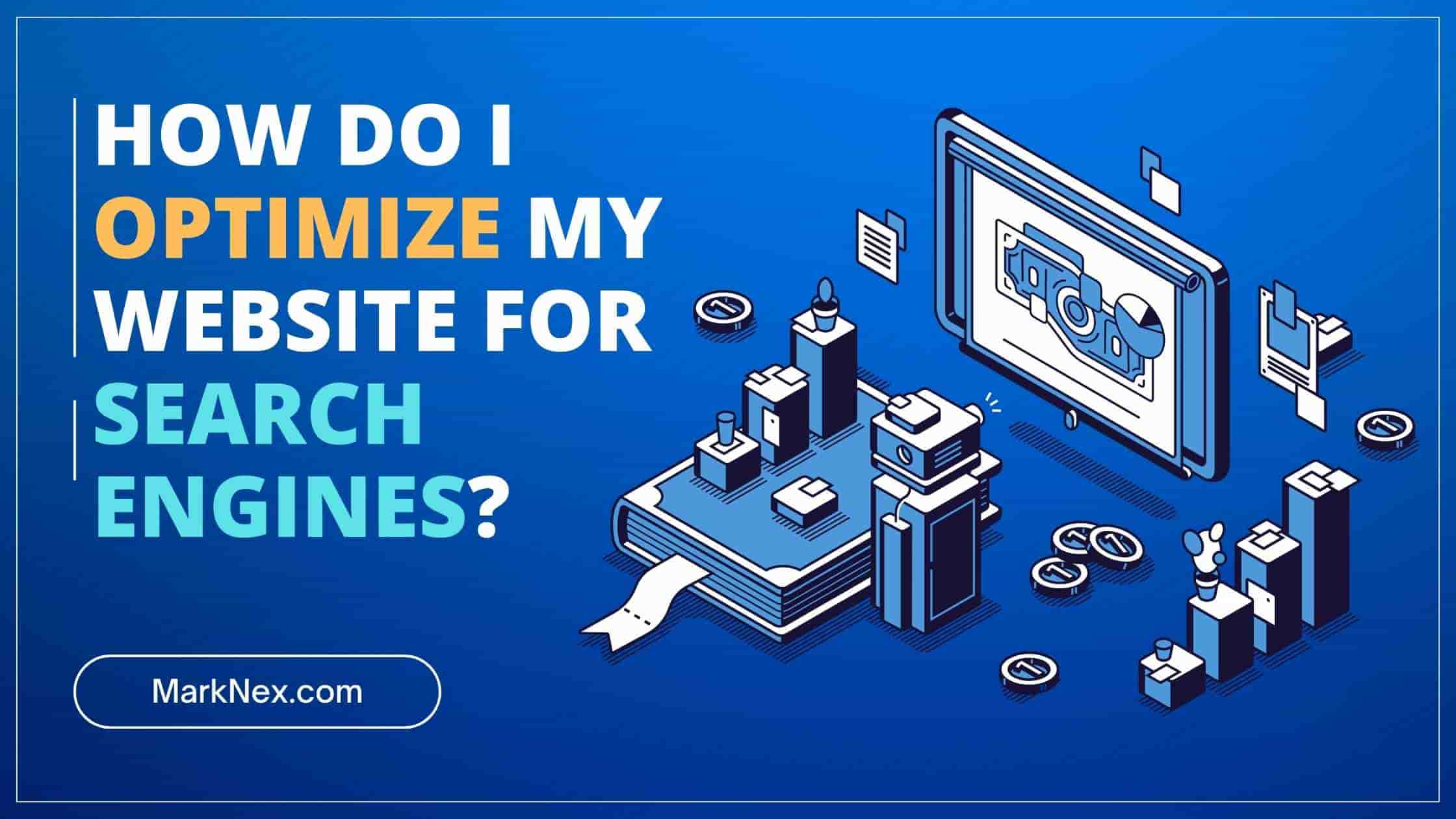Welcome to the world of SEO! How do i optimize my website for search engines, is all about making your website better so it shows up higher in search results. It’s like giving your online presence a turbo boost to get noticed by more people. Let’s dive in and explore how SEO can supercharge your website and propel your business to new heights!
What is SEO?
If you are worried about how to optimize my website for search engines, then I will tell you, SEO means making a website better so that it shows up in search results. This involves things like using the right words, making the website easy to use, and having good content. The words people search for are important, so SEO experts research to find those words and use them on the website. It’s also important to have good content that people will find interesting and helpful. When a website has all these things, it’s more likely to show up in search results.
Using the right words is super important for making websites appear on search engines. People type in specific words and phrases to find information online. To make sure a website shows up in search results, SEO experts study which words people use the most and add them to the website’s text, tags, and headers.
Having good substance on the website is also very important. If the information is interesting, helpful, and relates to what people are looking for, search engines will show the website to more people.
Significance of SEO & how do i optimize my website for search engines?
Search engine optimization means optimizing your website to rank higher on search engines like Google. It’s important because it helps people find your website when they search for things related to your business. So, how do I optimize my website for search engines? To do this, you need to use keywords, create high-quality content, get other websites to link to your website, and make sure your website is technically sound. By doing these things, you can improve your website’s visibility, reputation, and success online.
SEO service providers help businesses and content providers reach their target consumers in the vast digital world, therefore, its importance cannot be left behind. Gaining visibility, reputation, and success in the ever-changing online world is possible for individuals and businesses through understanding and using keywords, high-quality content, backlinks, and technical accuracy.
-
Authority and Trust:
SEO plays a crucial role in not only enhancing visibility but also in developing credibility and trust. People tend to trust and respect websites more if they appear high in search engine rankings. People tend to put their faith in search engines to deliver accurate and relevant results. This expectation is satisfied by an optimized website, which in turn inspires trust, reliability, and highlights the importance of SEO.
-
Business Expansion and Competitiveness:
SEO serves as a driver for growth and competition in the digital marketplace for firms. Nowadays, people use search engines to help them make purchases, so businesses that invest in search engine optimization are more likely to attract customers. With search engine optimization (SEO), even the smallest businesses can compete with the largest ones online—as long as they know how to use optimization strategies correctly.
-
Cost-Effective Marketing Strategy:
SEO is an extremely valuable and cost-effective marketing tactic. In contrast to traditional advertising strategies that need ongoing expenditure, SEO is a long-term investment that raises organic traffic and visibility. After optimization, a website can attract organic traffic without requiring ongoing costs associated with sponsored advertising. It is therefore a great option for companies of all sizes. In conclusion, SEO is a long-term, low-cost tactic that raises organic traffic and improves exposure.
-
Flexibility in Response to Dynamic Environments:
SEO is crucial in the fast-paced digital world because of its versatility. SEO professionals and content creators must keep themselves updated with search engine algorithm changes, user behavior patterns, and new technologies. This adaptability ensures that websites remain relevant and consistently meet the evolving needs of visitors and search engines.
Your Guide to SEO:
- Prelude: Understanding the SEO Score Sheet
Before you embark on how do I optimize my website for search engines?, it’s crucial to understand the score sheet that search engines use to rank websites. From keywords and backlinks to user experience, mobile-friendliness, and getting Free SEO consultation, this symphony is composed of multiple elements.
Significance of Keywords
Keyword Research: Unveiling the Rhythm
- Utilizing Keyword Planner Tools
Keywords serve as the intermediary between users’ search queries and the web content that is accessible. By integrating pertinent keywords into your content, you synchronize your material with the precise terms and phrases that users employ in their search inquiries. This guarantees that your material has a higher probability of appearing when users search for information about your specific field or sector.
- Studying Competitor Keywords
One way to gauge how well your keyword strategy is doing in comparison to the competition is to look at the keywords they’re using. You can learn more about your target audience’s preferred keywords and phrases by doing this. On top of that, it opens doors to uncharted territory, allowing you to discover ways you can surpass your rivals. If you want to get better at what you do and keep yourself motivated, this analysis is for you.
Long-Tail Keywords: Creating Subtle Notes
- Examining the Specificities of Niche Markets:
If you want your material to stand out in the crowded online arena, you need to become an authority in your field and learn the idioms and terminology of your target demographic. If you do this, you may tailor your content to your audience’s interests and requirements rather than just employing keywords. Search engine optimization (SEO) is all about making your approach work, therefore you need to know your niche inside and out.
- Improving User Intent Comprehension:
Indicative of user intent, long-tail keywords go beyond simple text strings. To develop effective long-tail keywords, it is essential to have a better understanding of user intent in a specific market. Understanding the motivations behind search searches and producing content that truly satisfies those needs is vital for successfully meeting the wants of consumers in a specific niche. In addition to being in line with search engine algorithms, this user-centric methodology ensures that your content genuinely engages your audience and builds trust.
Constructing a Cohesive Network
- Emphasizing Quality Rather Than Quantity:
When constructing backlinks, quality should take precedence over quantity. This entails giving strategic alliance formation top priority and making sure that any backlinks offered are pertinent to the circumstance. One way to ensure that the backlinks you receive are both plentiful and highly relevant to your niche is to guest post on platforms that are closely related to your industry. Furthermore, establishing relationships with influencers can help to increase the legitimacy of your website by obtaining reputable endorsements, which will increase its authority.
- Internal Linking:
Internal linking refers to the practice of creating hyperlinks within a website that connect different pages or sections of the same website. These hyperlinks are typically used to guide users to related or relevant content within the website. By incorporating internal links, website owners can improve navigation and user experience, as well as enhance search engine optimization Internal connection functions as the imperceptible symphony within your content. To enhance content flow, it is important to intentionally establish connections between relevant items, allowing users to navigate across your website without any interruptions. Strategically distributing SEO value ensures that link equity is evenly distributed throughout your website, providing benefits to pages that are of high priority. The internal network serves the purpose of facilitating navigation and also indicates to search engines the interlinked significance of your material, hence enhancing rankings.
Movement I: Coherent Composition
- High-Quality Content :
Your digital composition is fundamentally composed of high-quality information. Before you can succeed, you must have a thorough understanding of who your target market is. Understanding their likes, dislikes, and areas of interest is essential to creating original and compelling narratives. The art of storytelling promotes a sense of oneness among people in several ways, one of which is its capacity to elicit powerful emotional reactions from an audience, such as tears or laughter.
- Multimedia Elements:
When creating digital artwork, there are a few things to keep in mind. First, by optimizing picture compression, you can speed up loading times, particularly on mobile devices. Second, positioning images about content can enhance the overall look of the artwork and provide additional context. Third, including transcripts for accessibility and using SEO strategies, such as those used on sites like YouTube, can help capture the audience’s interest. By incorporating these multimedia elements, you can create a more engaging and accessible user experience that supports various learning approaches.
Second Movement: Technical Precision
- Site Architecture :
The architectural excellence of site structure entails the implementation of user-friendly navigation, coordinated with explicit call-to-actions and intuitive menu design. The URL structure’s digital blueprint intentionally incorporates keywords, establishing logical hierarchies that improve both user experience and search engine credibility.
- Mobile Optimization:
In the mobile-first paradigm, prioritizing mobile compatibility is of utmost importance. Incorporating mobile-friendly design advice accommodates the tastes of a growing audience that mostly uses mobile devices. By following Google’s Mobile-First Index standards, you can ensure that your website remains visible and accessible on different platforms, which in turn enhances its digital performance.
- Page Speed:
The key to achieving success is optimizing the performance of page speed and utilizing image compression techniques to compress images and files results in decreased load times, hence improving user satisfaction. Reducing the number of HTTP requests enhances browsing speed and efficiency, which aligns with search engine algorithms that reward fast and responsive websites.
Together, the many components create a comprehensive and potent online identity through the strategic application of SEO techniques. Whether it’s getting down to business, developing a solid network, attaining content coherence, or ensuring that everything is technically sound, every factor contributes to the success of the end result.
Finale: Monitoring and Fine-Tuning
As any maestro would tell you, the final performance is only as good as the continuous practice and refinement.
Analytics
Google Analytics: Capturing the Applause
- Setting Up Goals
To gauge the performance of your website, you can use Google Analytics. It helps you track specific actions by setting up goals and provides insights into user interactions. You can then monitor bounce rates to evaluate the effectiveness of your landing pages. This information can help you refine strategies for audience engagement.
- Monitoring Bounce Rates
When a user visits a website, engages with one page, and then exits without checking out further of the site’s content, this is known as a bounce. Hence, keeping an eye on bounce rates is essential to comprehending user behavior and landing page efficacy. To increase overall site performance and user engagement, SEO specialists may need to make adjustments in response to a high bounce rate, which may suggest issues with page relevancy, user experience, or content quality.
Regular Audits
Content Audits: Refining the Score
- Identifying High-Performing Content
Conduct content audits to refine your digital score. Identify high-performing content to leverage strengths and update outdated material. This ensures your website remains relevant, engaging, and aligned with evolving audience preferences.
- Updating Outdated Material
To stay up-to-date with the ever-changing field of SEO, it’s important to participate in industry news, SEO blogs, forums, and social media channels. By doing so, you can stay informed about algorithmic modifications and adhere to best practices. This enables you to modify your tactics with efficacy and fosters an ongoing learning attitude. Consequently, you’ll be able to stay ahead of the game and achieve better results for your website.
Technical Audits: Tuning the Instruments
- Checking for Broken Links
Since broken links disrupt continuous growth, perform technical audits to fine-tune your digital instruments. Check for broken links, ensuring seamless navigation, and analyze redirects for optimal user experience. These audits optimize website functionality, contributing to improved SEO performance.
- Analyzing Redirects
Users and search engines are guided from one URL to another using redirects, which are instructions. Reviewing the sorts of redirects used, such as permanent 301 redirects or temporary 302 redirects, and making sure they are configured correctly are all part of the study. Furthermore, ensuring a smooth user experience, protecting link equity, and preventing problems like broken or redirect loops that can affect a website’s performance and search engine results all depend on thorough analysis of redirects.
Staying Current
Adapting to Algorithm Changes: A Necessity
- Keeping Up with SEO Trends
Firstly, stay informed by following industry news, SEO blogs, forums, and social media channels. Moreover, keeping up with algorithm changes and best practices ensures you are well-equipped to adapt your strategies, fostering a continuous learning mindset in the ever-evolving field of SEO.
- Adapting Strategies Accordingly
Adapting to algorithm changes is imperative in SEO. Stay current with SEO trends and industry shifts to remain competitive. In essence, regularly modernizing strategies based on algorithmic updates ensure continued visibility and success in the dynamic digital landscape.
Mastering SEO: A Guide for Beginners
Utilize SEO Tools:
- Familiarize yourself with popular SEO tools such as Google Analytics, Google Search Console, SEMrush, Moz, and Ahrefs.
- Understand how to interpret data and insights provided by these tools.
Stay Updated:
- Keep an eye on industry news and updates in the SEO field.
Follow reputable SEO blogs, forums, and social media channels to stay informed about algorithm changes and know better ways of optimizing my website for search engines. How do I optimize my website for search engines?
Hands-On Practice:
- Apply your knowledge by optimizing a website or creating SEO-friendly content.
- Experiment with different strategies and analyze the results.
The Future of SEO:
-
Emerging Trends and Technologies:
As technology evolves, so does SEO. Emerging trends such as voice search, artificial intelligence, and mobile-first indexing are shaping the future of SEO. Last but not the least, adapting to these changes will be crucial for staying ahead in the digital landscape, and businesses must be prepared to integrate these innovations into their SEO strategies.
-
Ethical Considerations: Balancing Visibility and Integrity:
Nowadays, ethics are playing an important role in SEO. It’s crucial to balance the need for visibility with ethical considerations. Some unethical practices like black hat SEO can lead to penalties as they involve deceptive techniques to fool search engines. As the industry is growing, it’s becoming increasingly important to commit to ethical SEO practices for long-term success. In short, it’s important to be ethical in SEO to succeed in the long run.Finally, the ethical dimension of SEO is gaining prominence. Balancing the quest for visibility with ethical considerations is essential. Practices like black hat SEO, which involve manipulative techniques to deceive search engines, can result in penalties. As the industry matures, a commitment to ethical SEO practices becomes integral to long-term success.
Conclusion:
Lastly, in this grand orchestra of SEO, content creators hold a central role by painting a picture with techniques that make their content stand out on webpage, search engines, and browsers. Create content that captivates your audience and resonates with search engines by understanding keywords, crafting compelling content, and mastering technical intricacies. And if you’re wondering, “how do I optimize my website for search engines?” then I’ll tell you. By continuously monitoring and adapting your website, you can ensure that it remains successful in the ever-changing online world. In summary, the key rules that make you pop up on webpages should not be left ignored, and keeping up to date on new trends and analytics is essential.







3 Responses
This webpage is unbelievable. The wonderful substance exhibits the administrator’s enthusiasm. I’m stunned and expect more such mind blowing entries.
This resource is incredible. The wonderful data exhibits the manager’s earnestness. I’m stunned and expect more such astonishing material.
This webpage is outstanding. The site owner’s passion is evident in the excellent content. I’m in awe and anticipate reading more amazing pieces like this one.